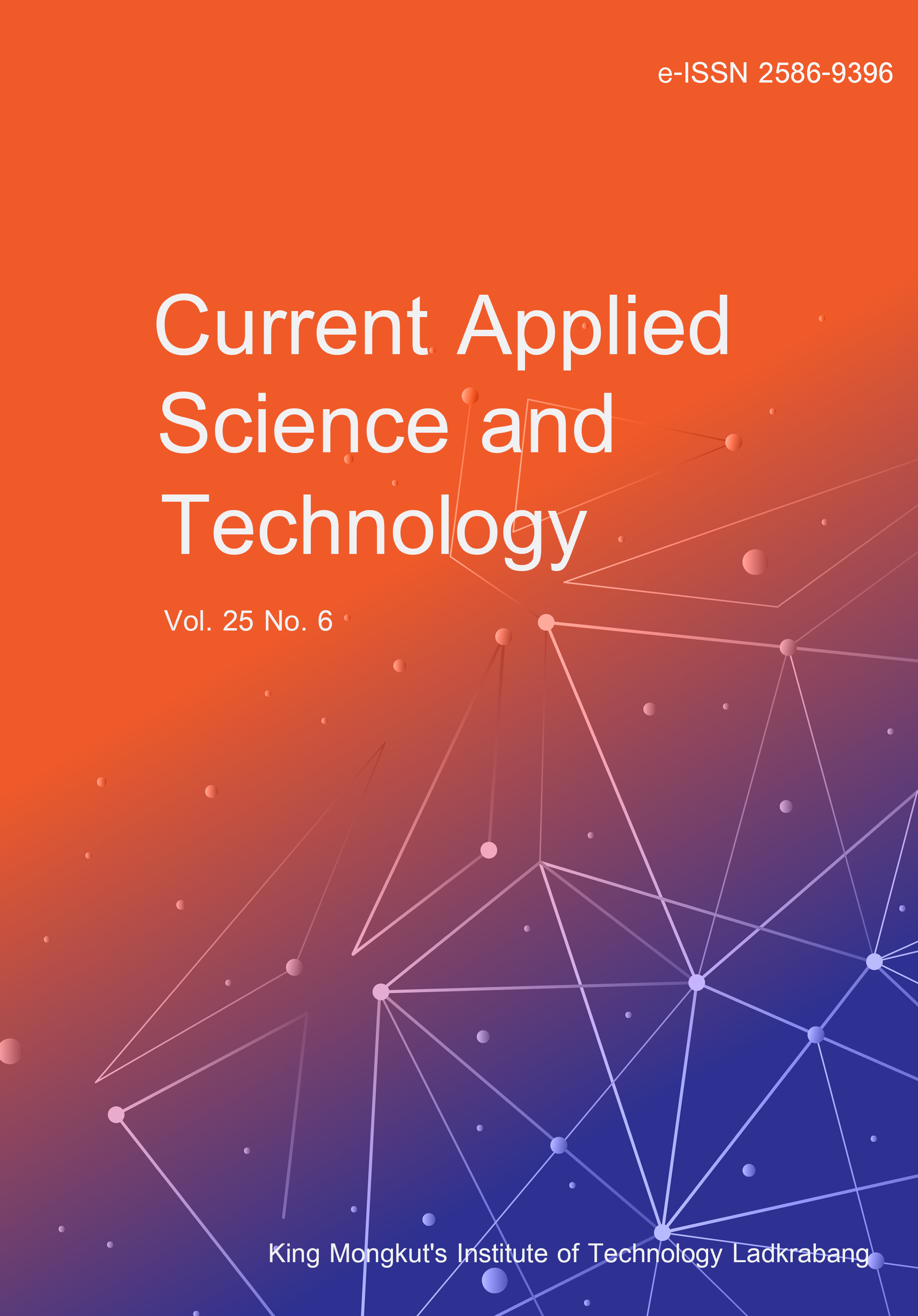Analysis of Zenith Sky Radiance in the Tropics: A Case Study of Chiang Mai and Nakhon Pathom, Thailand
Main Article Content
Abstract
Zenith sky radiance data collected at two sites: Chiang Mai station (18.78°N, 98.98°E) and Nakhon Pathom station (13.81°N, 100.04°E) in Thailand, were analyzed and used to develop a model. When analyzing the zenith sky radiance under all sky conditions, it was found that the diurnal variations of zenith sky radiance at both stations presented a similar pattern. The zenith sky radiance increased in the morning, peaked at noon, and decreased in the afternoon. The highest seasonal variation of zenith sky radiance occurred in the summer season (mid-February to mid-May) and the lowest value was in the winter season (mid-October to mid-February). The solar altitude, latitude of the location, and cloud cover affected variation of zenith sky radiance. For the modeling, the measurement data at Nakhon Pathom station were used for model development to estimate hourly zenith sky radiance under clear sky condition as a function of solar altitude. The hourly zenith sky radiance under clear sky condition data collected at Chiang Mai and Nakhon Pathom stations were employed to validate the accuracy of the model. The results showed that the measured and estimated hourly zenith sky radiance under clear sky conditions were in reasonable agreement, with root mean square error (RMSE) of 30.17% and mean bias error (MBE) of 7.48%. This model can be used to estimate zenith sky radiance data when measurement is not available and can be utilized to evaluate the maximum performance of solar energy applications.
Article Details

This work is licensed under a Creative Commons Attribution-NonCommercial-NoDerivatives 4.0 International License.
Copyright Transfer Statement
The copyright of this article is transferred to Current Applied Science and Technology journal with effect if and when the article is accepted for publication. The copyright transfer covers the exclusive right to reproduce and distribute the article, including reprints, translations, photographic reproductions, electronic form (offline, online) or any other reproductions of similar nature.
The author warrants that this contribution is original and that he/she has full power to make this grant. The author signs for and accepts responsibility for releasing this material on behalf of any and all co-authors.
Here is the link for download: Copyright transfer form.pdf
References
Chwieduk, D. A. (2017). Towards modern options of energy conservation in buildings. Renewable Energy, 101, 1194-1202. https://doi.org/10.1016/j.renene.2016.09.061
Darula, S., & Kittler, R. (2002). CIE general sky standard defining luminance distributions. https://publications.ibpsa.org/conference/paper/?id=esim2002_o2
Li, D. H. W., Aghimien, E. I., & Alshaibani, K. (2023). An analysis of real-time measured solar radiation and daylight and its energy implications for semi-transparent building-integrated photovoltaic façades. Buildings, 13(2), Article 386. https://doi.org/10.3390/buildings13020386
Li, D. H. W., Chau, N. T. C., & Wan, K. K. W. (2013). Predicting daylight illuminance and solar irradiance on vertical surfaces based on classified standard skies. Energy, 53, 252-258. https://doi.org/10.1016/j.energy.2013.02.049
Soler, A., & Gopinathan, K. K. (2004). Modeling zenith luminance on Madrid partly cloudy skies from diffuse illuminance on a horizontal surface and solar altitude. Energy Conversion and Management, 45(15-16), 2591-2601. https://doi.org/10.1016/j.enconman.2003.09.034
Torres, J. L., García, A., de Blas, M., Gracia, A., & Illanes, R. (2010). A study of zenith radiance in Pamplona under different sky conditions. Renewable Energy, 35(4), 830-838. https://doi.org/10.1016/j.renene.2009.08.026
Yu, G., Yang, H., Luo, D., Cheng, X., & Ansah, M. K. (2021). A review on developments and researches of building integrated photovoltaic (BIPV) windows and shading blinds. Renewable and Sustainable Energy Reviews, 149, Article 111355. https://doi.org/10.1016/j.rser.2021.111355






